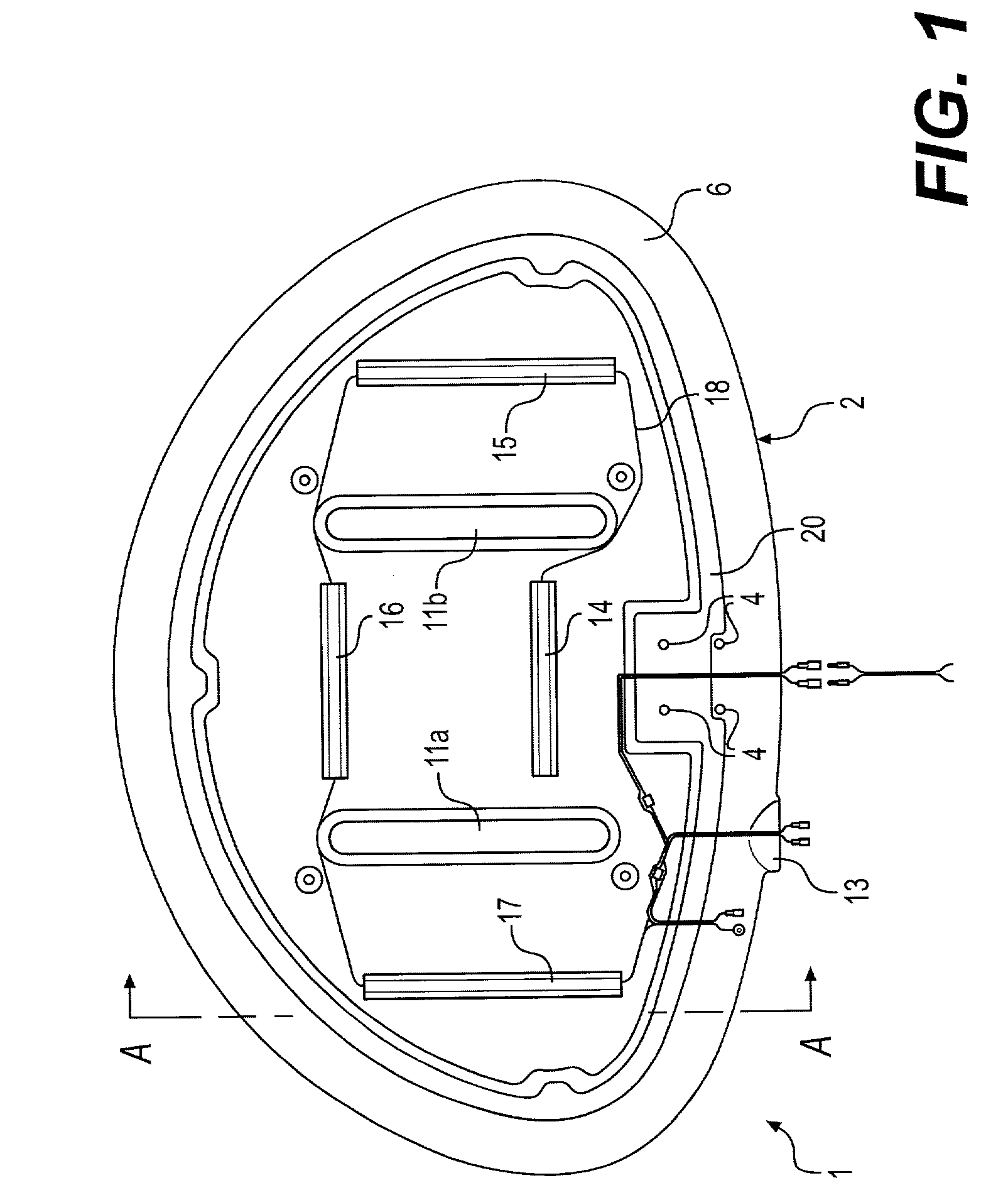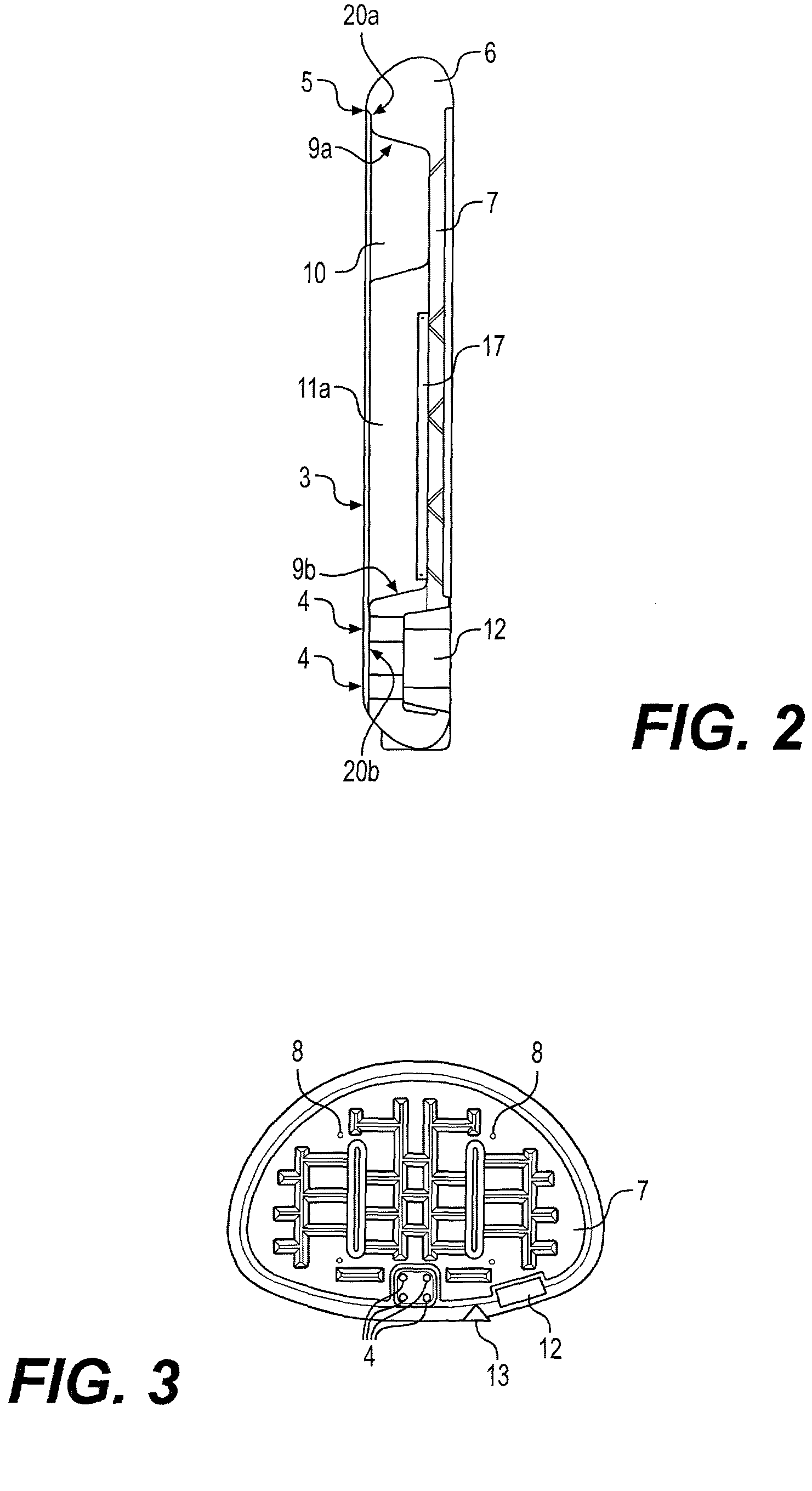Method of making a backboard assembly
a backboard and assembly technology, applied in the field of basketball backboards, can solve the problems of molded plastic frames that employ plastic or acrylic rebounding surfaces that suffer cracking and separation from the frame during ordinary use, prior art backboards that employ molded plastic frames often suffer structural problems, etc., to achieve the effect of convenient manufacturing and assembly
- Summary
- Abstract
- Description
- Claims
- Application Information
AI Technical Summary
Benefits of technology
Problems solved by technology
Method used
Image
Examples
Embodiment Construction
[0029]Referring first to FIG. 1, the preferred embodiment of the invention is shown wherein backboard assembly 1 includes a molded plastic frame 2. As will be described in more detail below, frame 2 is preferably molded from polyethylene, polycarbonate, or a similar material using blow molding, compression molding, or any other well-known molding technique. Although FIG. 1 depicts a backboard that is generally fan-shaped, other shapes may be employed easily since plastic molding techniques permit a wide variety of shapes, contours, and designs.
[0030]In the preferred embodiment, frame 2 is molded such that its peripheral edge 6 is raised. In other words, the border surrounding the frame is thicker from front to back than the interior portion of the frame. This preferred configuration is best viewed in the side-view of FIG. 2 taken along cut-line A—A in FIG. 1. As can be seen in FIG. 2, the frame has a raised edge 6 surrounding the outer periphery of the frame. The interior portion is...
PUM
| Property | Measurement | Unit |
|---|---|---|
| Translucency | aaaaa | aaaaa |
Abstract
Description
Claims
Application Information
 Login to View More
Login to View More - R&D
- Intellectual Property
- Life Sciences
- Materials
- Tech Scout
- Unparalleled Data Quality
- Higher Quality Content
- 60% Fewer Hallucinations
Browse by: Latest US Patents, China's latest patents, Technical Efficacy Thesaurus, Application Domain, Technology Topic, Popular Technical Reports.
© 2025 PatSnap. All rights reserved.Legal|Privacy policy|Modern Slavery Act Transparency Statement|Sitemap|About US| Contact US: help@patsnap.com



